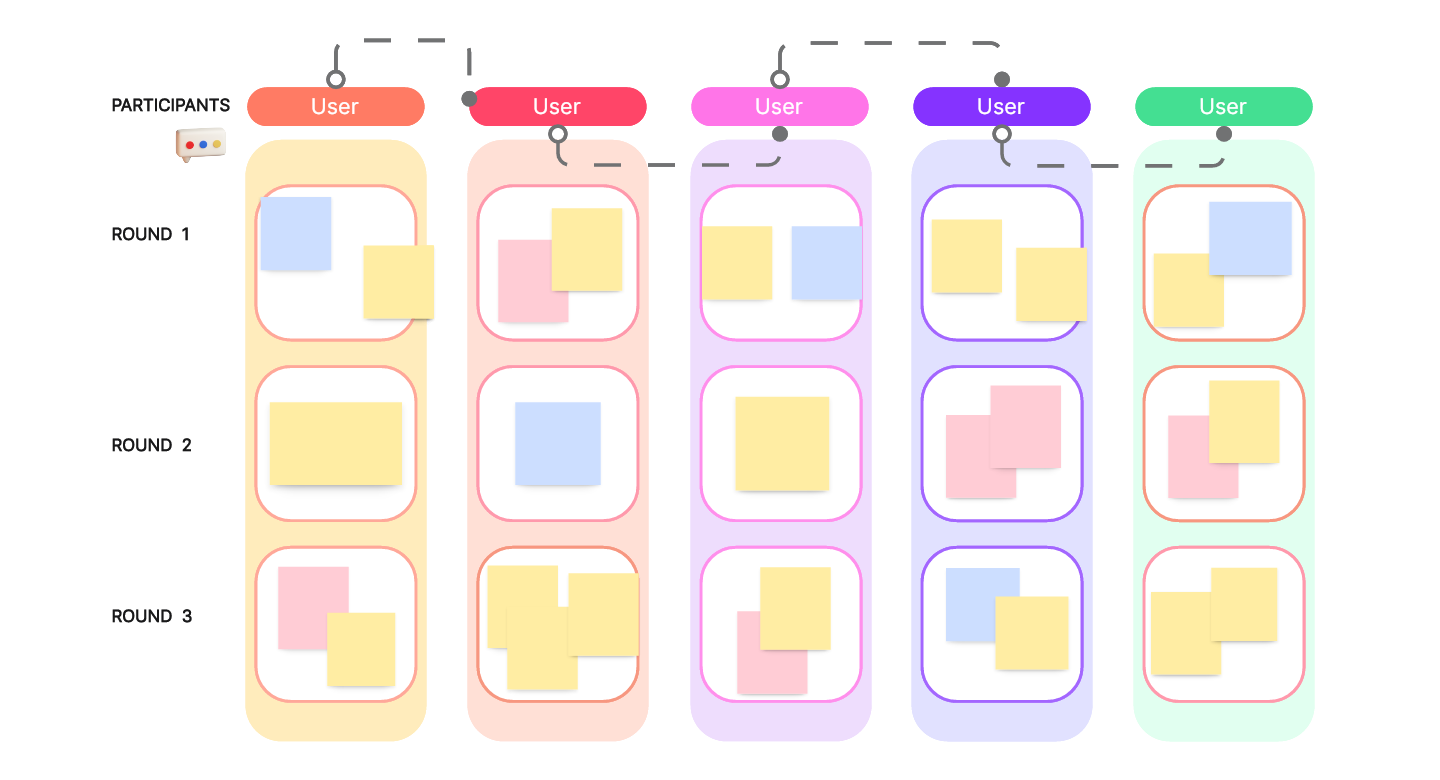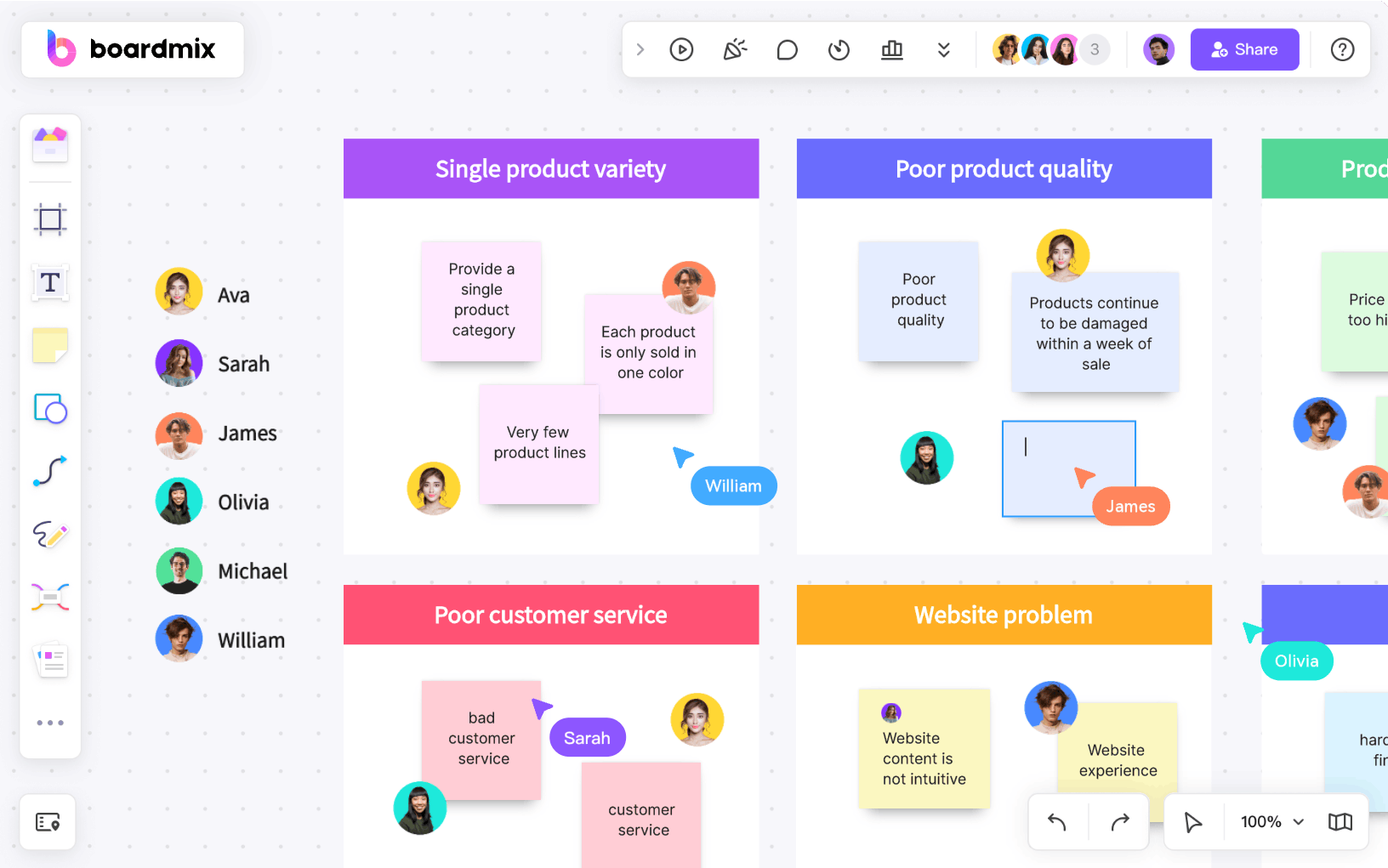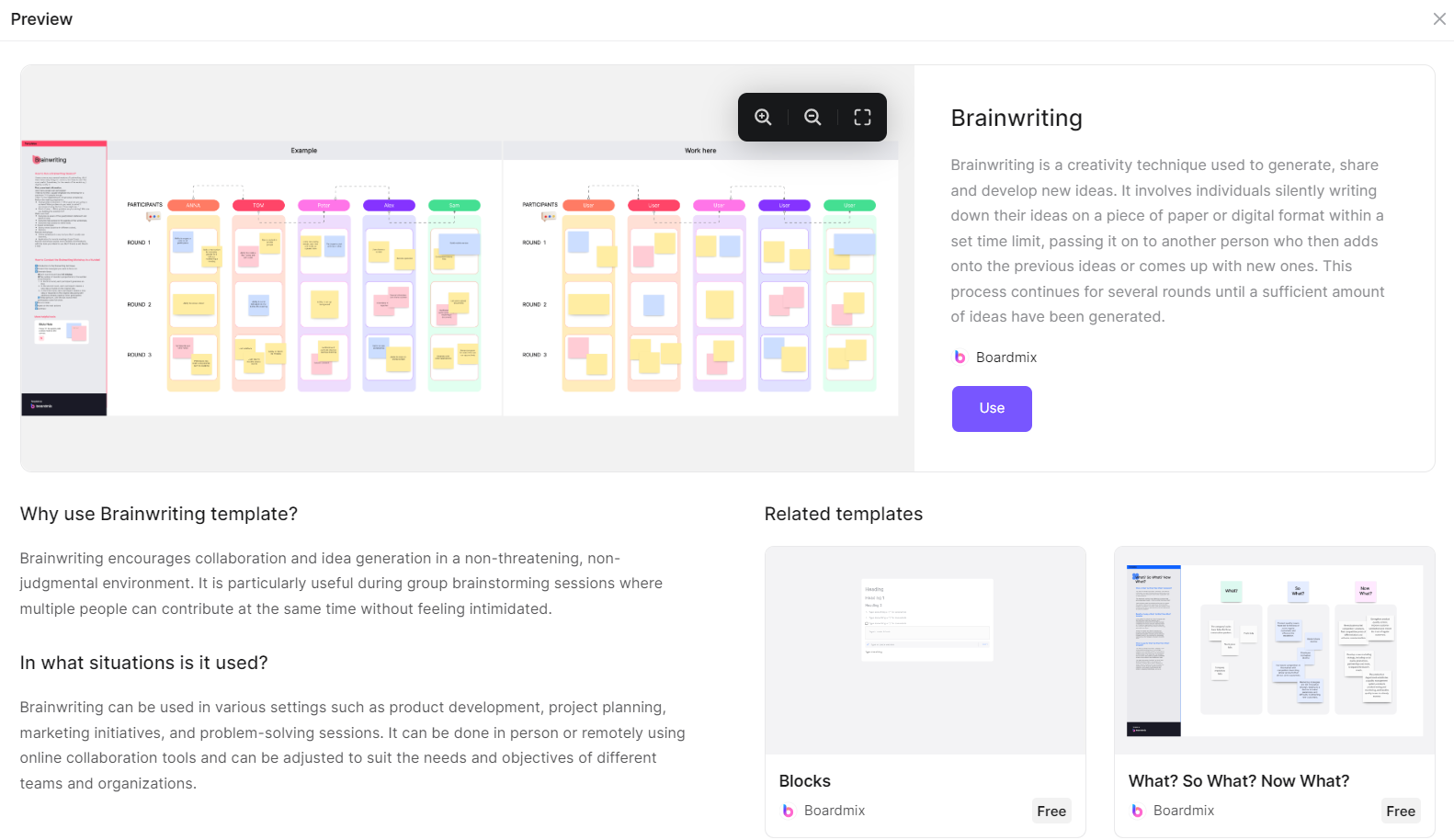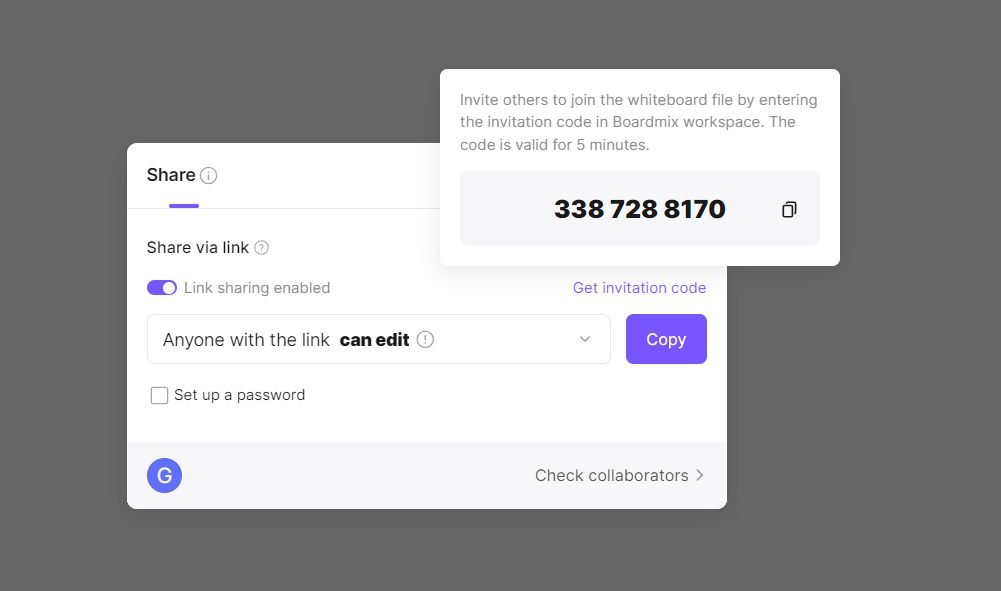In the realm of collaborative ideation, a technique known as brainwriting has emerged as an effective alternative to traditional brainstorming. Rooted in the understanding that creative thinking thrives in diverse and inclusive environments, brainwriting departs from the often vocal and assertive nature of brainstorming. Instead, it offers a quieter, more structured approach to generating ideas. So, are you ready to dive into the world of brainwriting?
Decode the Concept of Brainwriting
Brainwriting is the process where participants independently jot down their ideas on paper or a digital platform before sharing them with the rest of the group. The distinctive advantage of brainwriting lies in its democratic nature: all participants, irrespective of their position, personality, or persuasiveness, can contribute equally. This anonymity emboldens individuals to be more candid and imaginative with their ideas.

Moreover, brainwriting circumvents common issues that plague brainstorming sessions. Ideas are not immediately subjected to critique or approval, reducing inhibitions associated with judgment or rejection. Furthermore, since everyone writes and shares simultaneously, there is no overshadowing or interruption from dominant voices.
Fundamentals of Brainwriting
Understanding the core principles behind brainwriting enables effective implementation. Here are the key elements:
- Independence: Each participant generates ideas individually, allowing personal creativity to flourish without influence or pressure from others.
- Equality: Since all ideas are written, they stand on equal footing. There's no influence of vocal prowess or seniority, fostering inclusivity.
- Non-judgment: The process does not involve immediate feedback or critique. This non-judgmental environment encourages participants to be open and creative.
- Iteration: Brainwriting is not a one-and-done exercise. It includes rounds of idea generation, sharing, and development, driving innovation through collaborative refinement.
- Documentation: All ideas are documented, ensuring none get overlooked or forgotten.
When compared to traditional brainstorming, brainwriting presents itself as a superior method for generating diverse and comprehensive ideas. While it may not completely replace brainstorming in every setting, brainwriting certainly provides an invaluable tool when balanced collaboration and uninhibited creativity are sought.
In conclusion, brainwriting stands as a testament to the power of silent ideation—a method that catalyzes creative thinking by promoting individual reflection and group inclusivity in idea generation.
Benefits and Limitations of Brainwriting
Brainwriting as a method of idea generation brings in a fresh perspective compared to traditional brainstorming techniques. Like every other process, it has its set of advantages and disadvantages. It is important to recognize these facets to understand where brainwriting can be most effective.
Benefits of Brainwriting
Democratic Process: Brainwriting ensures equal participation from all attendees. It doesn't favor those who can articulate better or more quickly, providing a fair platform for every voice to be heard.
- Spurs Creativity: The silent, independent nature of the process allows thoughts to flow freely without fear of immediate judgment, stimulating more creative and innovative ideas.
- Promotes Efficiency: This method can generate more ideas in a shorter amount of time because everyone is simultaneously involved in the idea generation process.
- Inclusive: Brainwriting includes those who may be hesitant to speak out in groups due to personality traits or language barriers, fostering inclusivity.
- Reduces Conformity Pressure: As ideas are written and not immediately discussed, participants are less likely to conform to popular or senior voices.
- Documentation: As ideas are written down, it creates a permanent record that can be referred back to, ensuring no idea gets lost or forgotten.
Limitations of Brainwriting
- Lack of Immediate Clarification: Since ideas are written down, they may lack clarification or elaboration that verbal explanation would provide, leading to possible misinterpretation.
- Absence of Non-Verbal Cues: In brainwriting, the absence of body language and tone of voice could strip an idea of its complete significance or context.
- Potential for Longer Evaluation Process: The increased volume of ideas generated may result in a more extended evaluation phase, which could become time-consuming.
- Disengagement Risk: Participants who prefer interactive and dynamic discussions may find the quiet nature of brainwriting disengaging.
While brainwriting has its limitations, its benefits offer considerable value, especially in environments seeking comprehensive and diverse idea generation. Knowing when to apply this technique will help facilitate more productive and creative ideation sessions.
How to Conduct a Successful Brainwriting Session
Conducting a successful brainwriting session is not a mere task but an art. By integrating the following steps, you can create an efficient and productive session that harnesses the full potential of every participant.
Step 1: Define the Challenge
The first step involves clearly defining the problem or challenge for which you seek ideas. Make sure it is comprehensible, concise, and well-articulated to provide your team with a solid starting point.
Step 2: Assemble Your Team
Ensure your team is diverse in terms of knowledge, experience, and perspectives. This variety will lead to a rich plethora of ideas. Try to maintain an optimal size of six to eight members to ensure manageability and active participation.
Step 3: Explain the Process
Make sure everyone understands the rules and process of brainwriting. Establish that everyone has an equal voice, stress the importance of open-mindedness, and explain how the ideas will circulate.
Step 4: Begin the Brainwriting Round
Distribute paper or open up a digital platform where ideas will be written. Set a timer (usually around 5 minutes), and let everyone jot down their ideas independently.
Step 5: Circulate the Ideas
After time is up, participants should pass their papers or share their digital notes with another team member. Every member will then add new ideas or expand upon the existing ones on the document they receive.
Step 6: Continue the Cycle
Repeat steps four and five for as many rounds as necessary. Typically, three to five rounds suffice.
Step 7: Group Discussion
Once the rounds are complete, gather all the generated ideas and share them with the group. This stage is where clarification, discussion, and evaluation happen.
Step 8: Refine and Prioritize Ideas
Filter through the ideas collaboratively. Evaluate them based on criteria like feasibility, innovativeness, and alignment with the problem statement. Then, prioritize the most promising ones for further exploration or implementation.
Remember that creating an open, judgment-free environment is essential for brainwriting's success. This approach allows for maximum idea generation, sparking creativity from each individual while building a collective intelligence base.
Boardmix: Revolutionizing Brainwriting with a Multifunctional Whiteboard
In the modern age of technology and virtual collaboration, brainwriting necessitates an upgrade from traditional pen and paper. Enter Boardmix - a multifunctional whiteboard designed to streamline real-time brainwriting and amplify its benefits for teams, irrespective of their location.
What Is Boardmix
Boardmix is a digital platform that serves as an interactive whiteboard, bringing teams together for collaborative brainstorming and brainwriting sessions. It offers an intuitive interface where team members can jot down their ideas, share them with others, and work on them simultaneously in real-time.

Boardmix: A Game-Changer for Brainwriting
By enabling a seamless transition of brainwriting into the digital space, Boardmix unlocks a new level of flexibility and efficiency.
- Real-Time Collaboration: With Boardmix, geographical boundaries become insignificant. Team members can participate in a brainwriting session from anywhere in the world, simultaneously contributing to the shared whiteboard.
- Easy Accessibility: Accessible through various devices, Boardmix ensures that every member can contribute their ideas whenever inspiration strikes, facilitating uninterrupted flow of creativity.
- Secure Storage: As everything is digital, there are no worries about misplacing or losing important ideas. The platform ensures secure storage of all brainstormed content for future reference and review.
- Integrated Tools: Beyond simple text input, Boardmix offers an array of integrated tools like shapes, lines, and sticky notes that aid in idea visualization, making it more impactful.
- Streamlined Discussion: Post brainwriting, Boardmix's features enable easy sorting and grouping of ideas for a more structured discussion.
How to Use Boardmix for a Brainwriting Session
Just like traditional brainwriting, the process on Boardmix is easy and straightforward:
Step 1: Define the problem or question on a new whiteboard. You can also use the brainwriting template to get started quickly.

Step 2: Invite your team members to join the board.

Step 3: Each participant starts writing down their ideas on separate digital sticky notes.
Step 4: After a set time, participants can drag and drop their sticky notes onto another team member's area for them to read, add to, or expand on.
Step 5: Continue this process for several rounds until you have a substantial collection of diverse ideas.
Step 6: Once completed, team members can collectively group similar ideas and discuss each one for further clarity and refinement.
Boardmix not only complements the brainwriting process but enhances it with its innovative features and user-friendly design. By providing a conducive environment for creative thought exchange and collaborative idea generation, it has become an indispensable tool for any team looking to tap into their collective intelligence and unleash their creative potential.
Proven Brainwriting Techniques
Brainwriting is a compelling method of generating ideas in a group setting. This non-verbal ideation technique comes in different formats, each with its own unique approach and benefits. The 6-3-5 Brainwriting is one of the most well-known, but let's take a look at a few other brainwriting techniques that have proven to be effective.
6-3-5 Brainwriting
The 6-3-5 brainwriting, or the Method 635, is a classic approach devised by Bernd Rohrbach in 1968. The process involves 6 participants, each writing 3 ideas on a specific topic within 5 minutes. Each idea sheet is then passed on to the next participant to read and add their ideas, stimulating the generation of 108 ideas within 30 minutes.
Brainwriting Pool
The brainwriting pool begins with participants silently jotting down ideas on cards and placing them in the center of the table, or "pool." Participants then pick a card, read the idea, add their thoughts, and return it to the pool. This continues for a set period or until a specific number of ideas are generated.
Idea Card Method
The Idea Card Method works on generating solutions to defined problems. Participants write down ideas on cards and pass them on to the next person. The receiver reads the idea and either adds new thoughts or details to it or uses it as an inspiration for an entirely new idea.
Round-Robin Brainwriting
In Round-Robin Brainwriting, each member writes an idea on a sheet of paper in a round-robin format. The paper gets passed around, and each person adds a new idea inspired by the previous ones. This cycle continues until a predetermined number of rounds are completed or the page is full.
Bisociation Brainwriting
Bisociation Brainwriting works by combining two seemingly unrelated subjects or fields. Participants are provided with two different themes. They write down ideas that link these themes in a unique way, helping generate innovative and out-of-the-box solutions.
Directed Brainwriting
In Directed Brainwriting, the facilitator gives specific prompts related to the topic or problem at hand. Participants jot down ideas related to the prompts, driving idea generation in specific directions that might otherwise be overlooked.
These brainwriting techniques, including the classic 6-3-5 method, provide structured ways for groups to access collective intelligence and inspire fresh thinking. By selecting the appropriate technique for your team and your objective, you can facilitate efficient idea generation while ensuring everyone's voice is heard equally.













